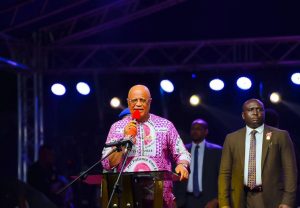China just reported its weakest annual growth in 29 years

That wasn’t unexpected, and Chinese officials insisted that the country’s economy will be stable this year. But it might be too early to say the worst has passed, according to analysts.The 6.1% GDP growth rate for 2019 was near the bottom of Beijing’s target range, and sharply down on the previous year’s 6.6%. The country also reported that GDP grew by just 6% in the fourth quarter. The ongoing slowdown is indicative of all the challenges facing the world’s second largest economy, which is contending with rising debt, cooling domestic demand and fallout from the trade war with the United States.Trade tensions, at least, cooled off somewhat before Friday’s announcement. Beijing and Washington signed a “phase one” trade deal earlier this week, which removes a little bit of pressure, at least in the short term. Chinese officials seized on the temporary truce during a press briefing. The initial trade agreement will give people more reason to be optimistic about the country’s economic growth, said Ning Jizhe, China’s national statistical chief. He added that the deal will help China deepen its economic relationship with the United States. Vice Premier Liu He, who was in Washington this week to sign the trade deal, also told reporters Wednesday that he is optimistic about the economy. He suggested that China is relying less on debt and is being driven by innovation. Analysts have already pointed to the “phase one” deal — in which China agreed to buy hundreds of billions of dollars worth of products from the United States, among other terms — as something that will boost business confidence this year. Fitch Ratings, for example, on Thursday raised its economic growth forecast for China this year to 5.9% from 5.7%.”The signing of the phase-one trade deal is a signal that the situation is unlikely to deteriorate,” said J.P. Morgan Asset Management Global Market Strategist Chaoping Zhu. But analysts have also questioned whether China will be able to fully live up to its promises. The trade war isn’t over: US tariffs on many Chinese goods still remain in effect, and Washington has made it clear that those will remain a form of leverage as the two sides negotiate the next phase of their agreement. And analysts from Citi, Nomura, and Invesco have all pointed out that it will be a challenge for China to reach its import targets for US goods.Even with the “phase one” deal, China has other things to worry about, according to economists at Capital Economics.”Despite the recent uptick in activity, we think it is premature to call the bottom of the current economic cycle,” they said in a research note. They added that the effects of the trade deal will be offset by a renewed slowdown in domestic demand, which will trigger further action by China’s central bank.Ning, the Chinese statistical chief, admitted that the economy will be pressured this year. But he also said China will take action as necessary to help stave off a serious slowdown, on top of other stimulus measures it has already announced. That should help the economy maintain “stable growth” this year, he added.Others also pointed to promising figures buried in Friday’s data. Industrial production and retail sales data for December outperformed forecasts, said Jeffrey Halley, senior market analyst for Asia Pacific at Oanda. That kind of data suggests that “the engine room of the world is slowly recovering its mojo,” he added.





